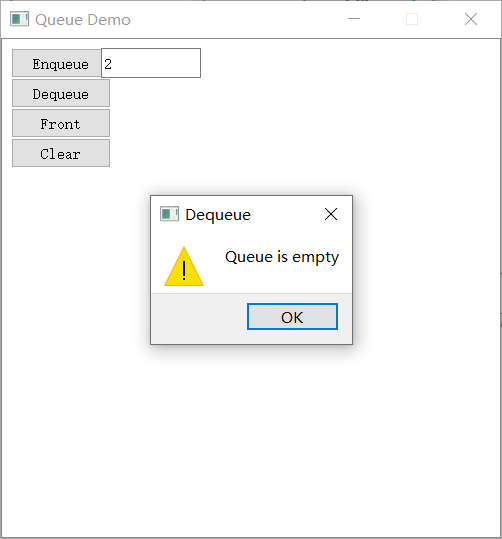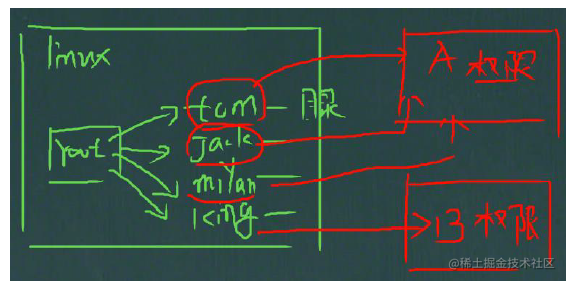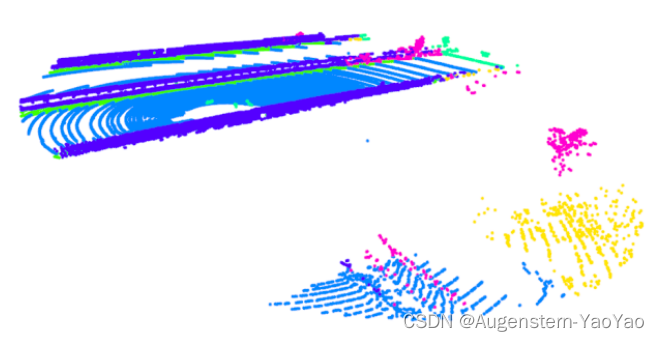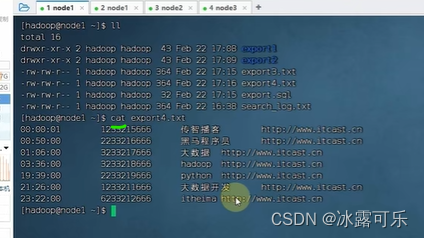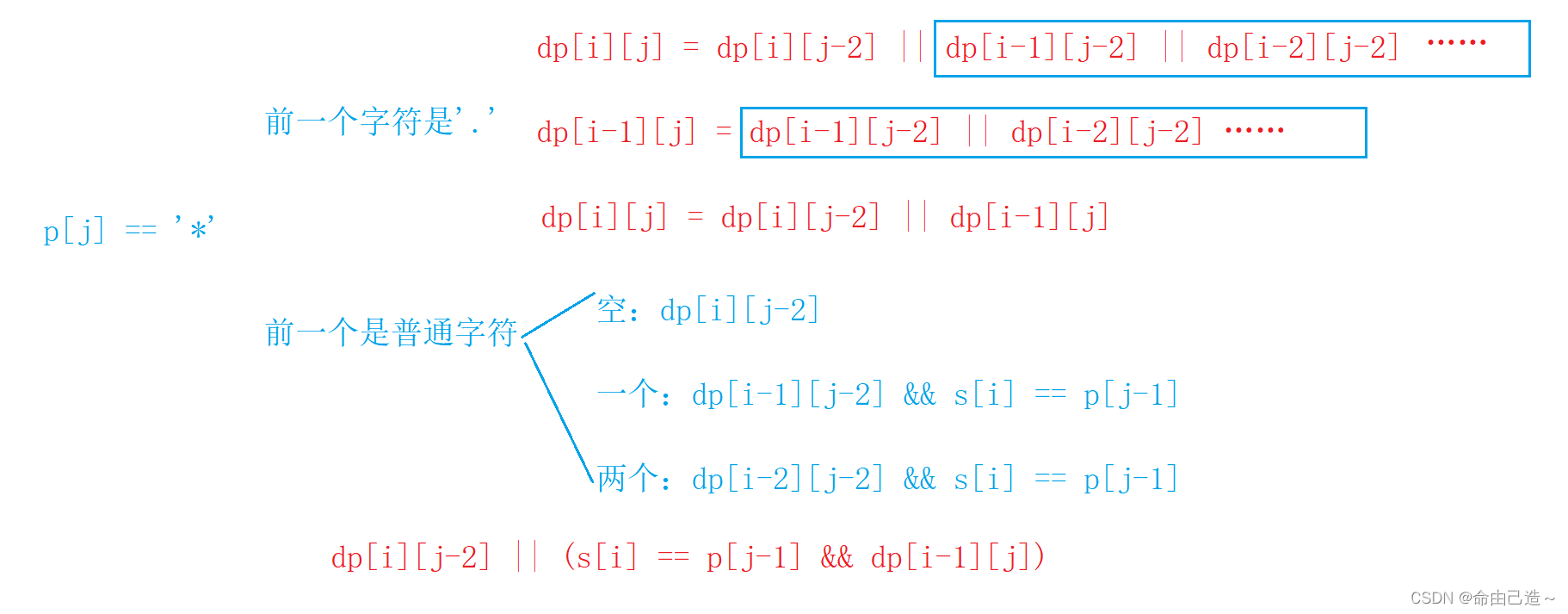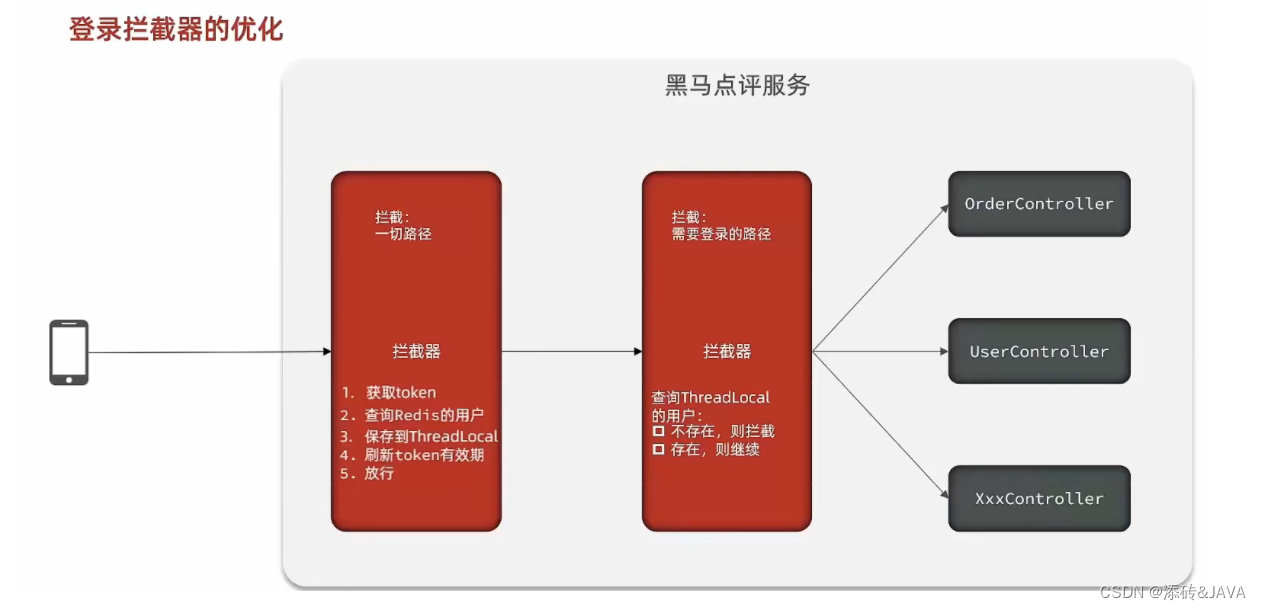介绍
如果想要在程序运行阶段访问某个类的所有信息,并支持修改类的状态或者行为的话,肯定会用到反射,而反射靠的就是Class类。
通过Class类可以获取类的实例,构造方法,字段,成员方法,接口等信息。获取之后可以通过API进行相应的操作。
public final class Class<T> implements java.io.Serializable,
GenericDeclaration,
Type,
AnnotatedElement
![[外链图片转存失败,源站可能有防盗链机制,建议将图片保存下来直接上传(img-NGXRMgsz-1685746810777)(null)]](https://img-blog.csdnimg.cn/06c9aead747447ecbeb0d87f8336bd45.png)
常量&变量
//标识注解类型
private static final int ANNOTATION= 0x00002000;
//标识枚举类型
private static final int ENUM = 0x00004000;
//表示该class文件并非由Java源代码所生成
private static final int SYNTHETIC = 0x00001000;
//注册本地方法
private static native void registerNatives();
static {
registerNatives();
}
//缓存构造器
private volatile transient Constructor<T> cachedConstructor;
//调用者的缓存构造器
private volatile transient Class<?> newInstanceCallerCache;
// cache the name to reduce the number of calls into the VM
//实体的名称
private transient String name;
private native String getName0();
// Package-private to allow ClassLoader access
ClassLoader getClassLoader0() { return classLoader; }
// Initialized in JVM not by private constructor
// This field is filtered from reflection access, i.e. getDeclaredField
// will throw NoSuchFieldException
//类加载器
private final ClassLoader classLoader;
/** protection domain returned when the internal domain is null */
//null值的安全返回
private static java.security.ProtectionDomain allPermDomain;
/**
* Reflection support.
*/
// Caches for certain reflective results
//缓存反射结果
private static boolean useCaches = true;
//反射信息
private volatile transient SoftReference<ReflectionData<T>> reflectionData;
// Incremented by the VM on each call to JVM TI RedefineClasses()
// that redefines this class or a superclass.
//每次调用JVM时由VM递增
private volatile transient int classRedefinedCount = 0;
// Generic signature handling
private native String getGenericSignature0();
// Generic info repository; lazily initialized
//通用信息
private volatile transient ClassRepository genericInfo;
/** use serialVersionUID from JDK 1.1 for interoperability */
//序列化版本号
private static final long serialVersionUID = 3206093459760846163L;
/**
* Class Class is special cased within the Serialization Stream Protocol.
*
* A Class instance is written initially into an ObjectOutputStream in the
* following format:
* <pre>
* {@code TC_CLASS} ClassDescriptor
* A ClassDescriptor is a special cased serialization of
* a {@code java.io.ObjectStreamClass} instance.
* </pre>
* A new handle is generated for the initial time the class descriptor
* is written into the stream. Future references to the class descriptor
* are written as references to the initial class descriptor instance.
*
* @see java.io.ObjectStreamClass
*/
private static final ObjectStreamField[] serialPersistentFields =
new ObjectStreamField[0];
//反射工厂
private static ReflectionFactory reflectionFactory;
// To be able to query system properties as soon as they're available
//是否初始化
private static boolean initted = false;
private static void checkInitted() {
if (initted) return;
AccessController.doPrivileged(new PrivilegedAction<Void>() {
public Void run() {
// Tests to ensure the system properties table is fully
// initialized. This is needed because reflection code is
// called very early in the initialization process (before
// command-line arguments have been parsed and therefore
// these user-settable properties installed.) We assume that
// if System.out is non-null then the System class has been
// fully initialized and that the bulk of the startup code
// has been run.
if (System.out == null) {
// java.lang.System not yet fully initialized
return null;
}
// Doesn't use Boolean.getBoolean to avoid class init.
String val =
System.getProperty("sun.reflect.noCaches");
if (val != null && val.equals("true")) {
useCaches = false;
}
initted = true;
return null;
}
});
}
//枚举类常量 null
private volatile transient T[] enumConstants = null;
//枚举类常量目录
private volatile transient Map<String, T> enumConstantDirectory = null;
// Annotations cache
@SuppressWarnings("UnusedDeclaration")
//注解数据
private volatile transient AnnotationData annotationData;
@SuppressWarnings("UnusedDeclaration")
//注解类型
private volatile transient AnnotationType annotationType;
/* Backing store of user-defined values pertaining to this class.
* Maintained by the ClassValue class.
*/
transient ClassValue.ClassValueMap classValueMap;
构造方法
/*
* Private constructor. Only the Java Virtual Machine creates Class objects.
* This constructor is not used and prevents the default constructor being
* generated.
*只能由java虚拟机创建对象
*/
private Class(ClassLoader loader) {
// Initialize final field for classLoader. The initialization value of non-null
// prevents future JIT optimizations from assuming this final field is null.
classLoader = loader;
}
Class并不能直接通过new Class()获取实例。那么应该如何获取呢?
//直接通过类的静态变量来获取
Class<Integer> intClass = Integer.class;
//通过实例变量的getClass方法
Integer integer = new Integer(0);
Class<? extends Integer> aClass = integer.getClass();
//通过Class.forName("类的全限定名")
Class<?> aClass1 = Class.forName("java.lang.Integer");
常用方法
forName
/**
* Returns the {@code Class} object associated with the class or
* interface with the given string name. Invoking this method is
* equivalent to:
*
* <blockquote>
* {@code Class.forName(className, true, currentLoader)}
* </blockquote>
*
* where {@code currentLoader} denotes the defining class loader of
* the current class.
*
* <p> For example, the following code fragment returns the
* runtime {@code Class} descriptor for the class named
* {@code java.lang.Thread}:
*
* <blockquote>
* {@code Class t = Class.forName("java.lang.Thread")}
* </blockquote>
* <p>
* A call to {@code forName("X")} causes the class named
* {@code X} to be initialized.
*
* @param className the fully qualified name of the desired class.
* @return the {@code Class} object for the class with the
* specified name.
* @exception LinkageError if the linkage fails
* @exception ExceptionInInitializerError if the initialization provoked
* by this method fails
* @exception ClassNotFoundException if the class cannot be located
* 手动加载一个类,
*/
@CallerSensitive
public static Class<?> forName(String className)
throws ClassNotFoundException {
Class<?> caller = Reflection.getCallerClass();
return forName0(className, true, ClassLoader.getClassLoader(caller), caller);
}
/**
* Returns the {@code Class} object associated with the class or
* interface with the given string name, using the given class loader.
* Given the fully qualified name for a class or interface (in the same
* format returned by {@code getName}) this method attempts to
* locate, load, and link the class or interface. The specified class
* loader is used to load the class or interface. If the parameter
* {@code loader} is null, the class is loaded through the bootstrap
* class loader. The class is initialized only if the
* {@code initialize} parameter is {@code true} and if it has
* not been initialized earlier.
*
* <p> If {@code name} denotes a primitive type or void, an attempt
* will be made to locate a user-defined class in the unnamed package whose
* name is {@code name}. Therefore, this method cannot be used to
* obtain any of the {@code Class} objects representing primitive
* types or void.
*
* <p> If {@code name} denotes an array class, the component type of
* the array class is loaded but not initialized.
*
* <p> For example, in an instance method the expression:
*
* <blockquote>
* {@code Class.forName("Foo")}
* </blockquote>
*
* is equivalent to:
*
* <blockquote>
* {@code Class.forName("Foo", true, this.getClass().getClassLoader())}
* </blockquote>
*
* Note that this method throws errors related to loading, linking or
* initializing as specified in Sections 12.2, 12.3 and 12.4 of <em>The
* Java Language Specification</em>.
* Note that this method does not check whether the requested class
* is accessible to its caller.
*
* <p> If the {@code loader} is {@code null}, and a security
* manager is present, and the caller's class loader is not null, then this
* method calls the security manager's {@code checkPermission} method
* with a {@code RuntimePermission("getClassLoader")} permission to
* ensure it's ok to access the bootstrap class loader.
*
* @param name fully qualified name of the desired class
* @param initialize if {@code true} the class will be initialized.
* See Section 12.4 of <em>The Java Language Specification</em>.
* @param loader class loader from which the class must be loaded
* @return class object representing the desired class
*
* @exception LinkageError if the linkage fails
* @exception ExceptionInInitializerError if the initialization provoked
* by this method fails
* @exception ClassNotFoundException if the class cannot be located by
* the specified class loader
*
* @see java.lang.Class#forName(String)
* @see java.lang.ClassLoader
* @since 1.2
* boolean initialize 是否对类进行初始化
*/
@CallerSensitive
public static Class<?> forName(String name, boolean initialize,
ClassLoader loader)
throws ClassNotFoundException
{
Class<?> caller = null;
SecurityManager sm = System.getSecurityManager();
if (sm != null) {
// Reflective call to get caller class is only needed if a security manager
// is present. Avoid the overhead of making this call otherwise.
caller = Reflection.getCallerClass();
if (sun.misc.VM.isSystemDomainLoader(loader)) {
ClassLoader ccl = ClassLoader.getClassLoader(caller);
if (!sun.misc.VM.isSystemDomainLoader(ccl)) {
sm.checkPermission(
SecurityConstants.GET_CLASSLOADER_PERMISSION);
}
}
}
return forName0(name, initialize, loader, caller);
}
/** Called after security check for system loader access checks have been made. */
private static native Class<?> forName0(String name, boolean initialize,
ClassLoader loader,
Class<?> caller)
throws ClassNotFoundException;
在使用反射的时候,Class.forName是最常用的一种方式。而Class.forName底层会指向forName0这个本地方法
参数:
(1)name:类的全限定名
(2)initialize:是否初始化这个类
(3)loader:类加载器
(4)caller:调用Class.forName所在类的Class,比如A类代码块里有Class.forName,那么caller就是A的class实例。
getConstructors
/**
* Returns an array containing {@code Constructor} objects reflecting
* all the public constructors of the class represented by this
* {@code Class} object. An array of length 0 is returned if the
* class has no public constructors, or if the class is an array class, or
* if the class reflects a primitive type or void.
*
* Note that while this method returns an array of {@code
* Constructor<T>} objects (that is an array of constructors from
* this class), the return type of this method is {@code
* Constructor<?>[]} and <em>not</em> {@code Constructor<T>[]} as
* might be expected. This less informative return type is
* necessary since after being returned from this method, the
* array could be modified to hold {@code Constructor} objects for
* different classes, which would violate the type guarantees of
* {@code Constructor<T>[]}.
*
* @return the array of {@code Constructor} objects representing the
* public constructors of this class
* @throws SecurityException
* If a security manager, <i>s</i>, is present and
* the caller's class loader is not the same as or an
* ancestor of the class loader for the current class and
* invocation of {@link SecurityManager#checkPackageAccess
* s.checkPackageAccess()} denies access to the package
* of this class.
*
* @since JDK1.1
* 返回构造函数组成的数据
*/
@CallerSensitive
public Constructor<?>[] getConstructors() throws SecurityException {
//判断是否有访问权限
checkMemberAccess(Member.PUBLIC, Reflection.getCallerClass(), true);
//获取到声明的构造方法,并拷贝一份构造方法
return copyConstructors(privateGetDeclaredConstructors(true));
}
privateGetDeclaredConstructors()
// Returns an array of "root" constructors. These Constructor
// objects must NOT be propagated to the outside world, but must
// instead be copied via ReflectionFactory.copyConstructor.
private Constructor<T>[] privateGetDeclaredConstructors(boolean publicOnly) {
//判断是否配置了useCached属性
checkInitted();
Constructor<T>[] res;
//获取缓存当中的数据
ReflectionData<T> rd = reflectionData();
if (rd != null) {
//返回缓存当中的构造方法 根据publicOnly决定是共有还是私有的构造方法
res = publicOnly ? rd.publicConstructors : rd.declaredConstructors;
if (res != null) return res;
}
// No cached value available; request value from VM
if (isInterface()) {
//直接生成一个数组长度为0的Constructor数组 因为接口没有构造方法
@SuppressWarnings("unchecked")
Constructor<T>[] temporaryRes = (Constructor<T>[]) new Constructor<?>[0];
res = temporaryRes;
} else {
//从JVM当中读取数据
res = getDeclaredConstructors0(publicOnly);
}
if (rd != null) {
//更新缓存reflectionData当中的构造方法
if (publicOnly) {
rd.publicConstructors = res;
} else {
rd.declaredConstructors = res;
}
}
return res;
}
reflectionData
// Lazily create and cache ReflectionData
//创建和缓存反射获得的数据
private ReflectionData<T> reflectionData() {
//获取当前reflectionData
SoftReference<ReflectionData<T>> reflectionData = this.reflectionData;
int classRedefinedCount = this.classRedefinedCount;
ReflectionData<T> rd;
//如果可以使用缓存,并且缓存当中的数据不为null,而且缓存没有失效,(缓存当中redefinedCount等于classRedefinedCount的值)
if (useCaches &&
reflectionData != null &&
(rd = reflectionData.get()) != null &&
rd.redefinedCount == classRedefinedCount) {
//直接返回缓存当中的reflectionData
return rd;
}
// else no SoftReference or cleared SoftReference or stale ReflectionData
// -> create and replace new instance
//创建新的reflectionData,并保存到缓存当中去
return newReflectionData(reflectionData, classRedefinedCount);
}
newReflectionData
private ReflectionData<T> newReflectionData(SoftReference<ReflectionData<T>> oldReflectionData,
int classRedefinedCount) {
//不使用缓存,直接返回
if (!useCaches) return null;
//while + cas
while (true) {
//创建新的ReflectionData
ReflectionData<T> rd = new ReflectionData<>(classRedefinedCount);
// try to CAS it...
//更新成功,返回
if (Atomic.casReflectionData(this, oldReflectionData, new SoftReference<>(rd))) {
return rd;
}
// else retry
//否则获得旧的reflectionData和classRedefinedCount的值
oldReflectionData = this.reflectionData;
classRedefinedCount = this.classRedefinedCount;
//如果旧的值不为null, 并且缓存未失效,说明其他线程更新成功了
if (oldReflectionData != null &&
(rd = oldReflectionData.get()) != null &&
rd.redefinedCount == classRedefinedCount) {
//直接返回
return rd;
}
}
}
newInstance
Constructor.java
获取到Constructor之后,可以通过newInstance的方式获取到实例方法
Constructor.java
/**
* Uses the constructor represented by this {@code Constructor} object to
* create and initialize a new instance of the constructor's
* declaring class, with the specified initialization parameters.
* Individual parameters are automatically unwrapped to match
* primitive formal parameters, and both primitive and reference
* parameters are subject to method invocation conversions as necessary.
*
* <p>If the number of formal parameters required by the underlying constructor
* is 0, the supplied {@code initargs} array may be of length 0 or null.
*
* <p>If the constructor's declaring class is an inner class in a
* non-static context, the first argument to the constructor needs
* to be the enclosing instance; see section 15.9.3 of
* <cite>The Java™ Language Specification</cite>.
*
* <p>If the required access and argument checks succeed and the
* instantiation will proceed, the constructor's declaring class
* is initialized if it has not already been initialized.
*
* <p>If the constructor completes normally, returns the newly
* created and initialized instance.
*
* @param initargs array of objects to be passed as arguments to
* the constructor call; values of primitive types are wrapped in
* a wrapper object of the appropriate type (e.g. a {@code float}
* in a {@link java.lang.Float Float})
*
* @return a new object created by calling the constructor
* this object represents
*
* @exception IllegalAccessException if this {@code Constructor} object
* is enforcing Java language access control and the underlying
* constructor is inaccessible.
* @exception IllegalArgumentException if the number of actual
* and formal parameters differ; if an unwrapping
* conversion for primitive arguments fails; or if,
* after possible unwrapping, a parameter value
* cannot be converted to the corresponding formal
* parameter type by a method invocation conversion; if
* this constructor pertains to an enum type.
* @exception InstantiationException if the class that declares the
* underlying constructor represents an abstract class.
* @exception InvocationTargetException if the underlying constructor
* throws an exception.
* @exception ExceptionInInitializerError if the initialization provoked
* by this method fails.
* 获取到实例方法
*/
@CallerSensitive
public T newInstance(Object ... initargs)
throws InstantiationException, IllegalAccessException,
IllegalArgumentException, InvocationTargetException
{
//判断语言级别的访问权限是否被覆盖
if (!override) {
//没有被覆盖需要检查是否有访问权限
if (!Reflection.quickCheckMemberAccess(clazz, modifiers)) {
Class<?> caller = Reflection.getCallerClass();
checkAccess(caller, clazz, null, modifiers);
}
}
//判断是否为枚举类型
if ((clazz.getModifiers() & Modifier.ENUM) != 0)
//如果是枚举类型不能通过反射创建
throw new IllegalArgumentException("Cannot reflectively create enum objects");
//获取constructorAccessor
ConstructorAccessor ca = constructorAccessor; // read volatile
if (ca == null) {
//如果为null, 通过acquireConstructorAccessor获取
ca = acquireConstructorAccessor();
}
//通过ConstructorAccessor创建实例对象
@SuppressWarnings("unchecked")
T inst = (T) ca.newInstance(initargs);
return inst;
}
acquireConstructorAccessor
构建ConstructorAccessor
Constructor.java
// NOTE that there is no synchronization used here. It is correct
// (though not efficient) to generate more than one
// ConstructorAccessor for a given Constructor. However, avoiding
// synchronization will probably make the implementation more
// scalable.
private ConstructorAccessor acquireConstructorAccessor() {
// First check to see if one has been created yet, and take it
// if so.
ConstructorAccessor tmp = null;
if (root != null) tmp = root.getConstructorAccessor();
if (tmp != null) {
//先判断是否已经创建了ConstructorAccessor 如果已经创建了,直接返回获取就可以
constructorAccessor = tmp;
} else {
// Otherwise fabricate one and propagate it up to the root
//通过reflectionFactory来创建一个新的ConstructorAccessor
tmp = reflectionFactory.newConstructorAccessor(this);
//设置当前Class对象当中的ConstructorAccessor对象
setConstructorAccessor(tmp);
}
return tmp;
}
getDeclaredMethod
获取指定的Method对象方法
/**
* Returns a {@code Method} object that reflects the specified
* declared method of the class or interface represented by this
* {@code Class} object. The {@code name} parameter is a
* {@code String} that specifies the simple name of the desired
* method, and the {@code parameterTypes} parameter is an array of
* {@code Class} objects that identify the method's formal parameter
* types, in declared order. If more than one method with the same
* parameter types is declared in a class, and one of these methods has a
* return type that is more specific than any of the others, that method is
* returned; otherwise one of the methods is chosen arbitrarily. If the
* name is "<init>"or "<clinit>" a {@code NoSuchMethodException}
* is raised.
*
* <p> If this {@code Class} object represents an array type, then this
* method does not find the {@code clone()} method.
*
* @param name the name of the method
* @param parameterTypes the parameter array
* @return the {@code Method} object for the method of this class
* matching the specified name and parameters
* @throws NoSuchMethodException if a matching method is not found.
* @throws NullPointerException if {@code name} is {@code null}
* @throws SecurityException
* If a security manager, <i>s</i>, is present and any of the
* following conditions is met:
*
* <ul>
*
* <li> the caller's class loader is not the same as the
* class loader of this class and invocation of
* {@link SecurityManager#checkPermission
* s.checkPermission} method with
* {@code RuntimePermission("accessDeclaredMembers")}
* denies access to the declared method
*
* <li> the caller's class loader is not the same as or an
* ancestor of the class loader for the current class and
* invocation of {@link SecurityManager#checkPackageAccess
* s.checkPackageAccess()} denies access to the package
* of this class
*
* </ul>
*
* @jls 8.2 Class Members
* @jls 8.4 Method Declarations
* @since JDK1.1
* 获取指定的Method对象方法
*/
@CallerSensitive
public Method getDeclaredMethod(String name, Class<?>... parameterTypes)
throws NoSuchMethodException, SecurityException {
//判断当前method是否有访问权限
checkMemberAccess(Member.DECLARED, Reflection.getCallerClass(), true);
//privateGetDeclaredMethods获取到当前所声明的所有方法
//根据当前传递的方法名和参数类型从声明的方法中找到匹配的方法
Method method = searchMethods(privateGetDeclaredMethods(false), name, parameterTypes);
if (method == null) {
throw new NoSuchMethodException(getName() + "." + name + argumentTypesToString(parameterTypes));
}
//返回
return method;
}
privateGetDeclaredMethods
// Returns an array of "root" methods. These Method objects must NOT
// be propagated to the outside world, but must instead be copied
// via ReflectionFactory.copyMethod.
//获取类中声明方法具体的实现
//publicOnly 是否只获取public方法
private Method[] privateGetDeclaredMethods(boolean publicOnly) {
//等待系统内部类初始化完成,系统属性(sun.reflect.noCaches)被解析完成
checkInitted();
Method[] res;
//判断当前是否有配置信息
ReflectionData<T> rd = reflectionData();
if (rd != null) {
//从缓存中获取数据
res = publicOnly ? rd.declaredPublicMethods : rd.declaredMethods;
if (res != null) return res;
}
// No cached value available; request value from VM
//从JVM当中读取数据 getDeclaredMethods0(publicOnly) 使用native方式读取methods数组对象
res = Reflection.filterMethods(this, getDeclaredMethods0(publicOnly));
if (rd != null) {
//将缓存当中的数据更新
if (publicOnly) {
rd.declaredPublicMethods = res;
} else {
rd.declaredMethods = res;
}
}
return res;
}



